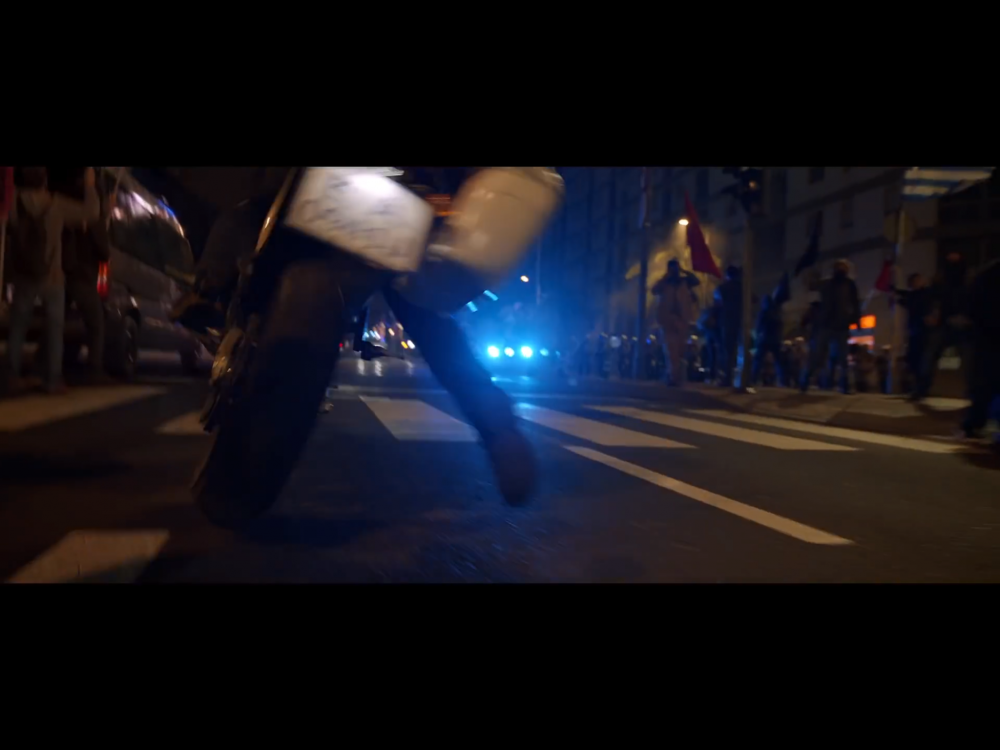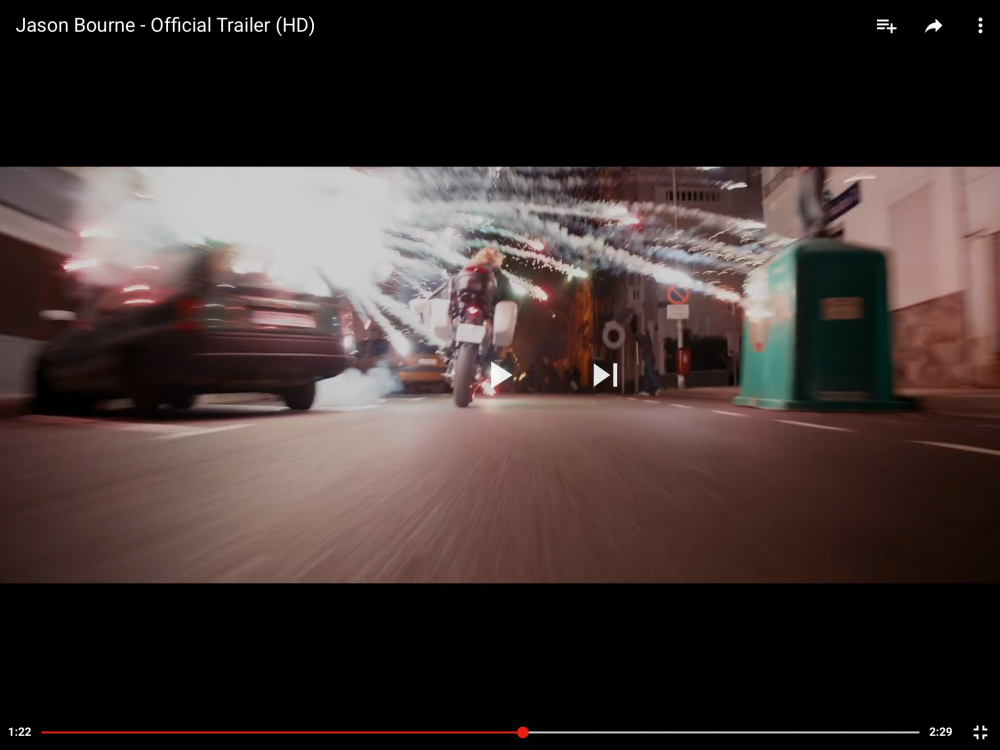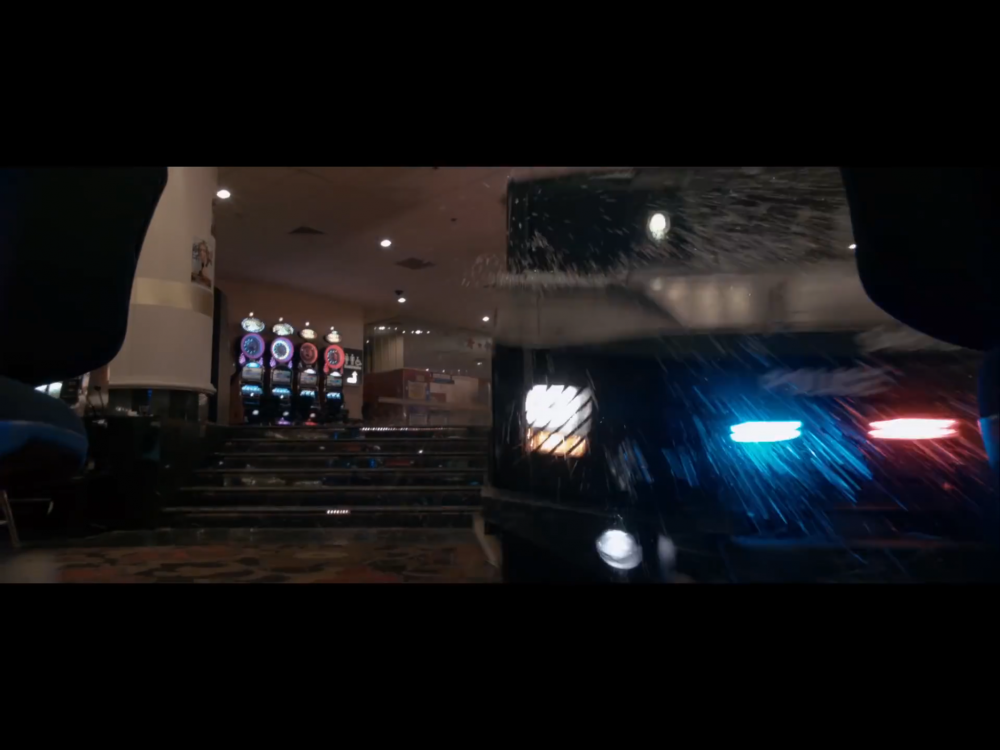Leaderboard
Popular Content
Showing content with the highest reputation on 08/04/2016 in all areas
-

Samsung NX Speed Booster
kidzrevil and 6 others reacted to lucabutera for a topic
No, you do not modify the body camera. If you get a speed booster EF, you can use all full frame lenses: Canon EF, Sigma SA, Praktica (baionet P/B),Minolta AF/Sony Alpha, Exakta, M39 ( ZM39), M42, Pentax k, Contax/Yashica (C/Y), DKL mount, Yashica MA, Olympus OM, Nikon G/F , Leica R, Arri STD-B-PL, Mini T - T - T2 mount, Novolfex A mount. One speed booster for all lenses! Are you happy?7 points -
Kipon has done it, for now only in Leica and Sony mounts: http://www.sonyalpharumors.com/kipon-announces-worlds-first-medium-format-hasselblad-v-sony-e-mount-focal-length-reducer-adapter/ Looking forward to seeing samples.4 points
-

A Success Story to Inspire Us All
andrgl and 2 others reacted to HelsinkiZim for a topic
I make no claims to knowing the guy, being a part of anything other than being his fan for the past 3 years. He introduced me to blackmagic, because when I searched for blackmagic in 2014 his vimeo channel came up all the time. He started with, if I remember, the pocket and then moved on to the cinema camea. He built his own light systems and taught himself pseudo 3d animation to complete his money shots. His talent was his wife. Who, if I remember, was a painter or photographer, I don't know, but she was not shy. Yes, it sounds like a 'latching on to success' post, but really, I thought he was very strange. But I wathecd all his early videos like a hawk because he had, what we call, 'talent'. He got hired by some agency based on his shorts and I thought he was gone. Then a week ago I see promo for a film BASED ON HIS SHORT. To me, he is an inspiration. His movie is trending worldwide, its called Lights Out. Look through his videos to find his inspiration. Here's the profile https://vimeo.com/dauid Try to watch his behind the scenes if you can where he gets a bit nuts with piping and hardware lighting. We should support him fully!3 points -

Making Movies is Hard?
Phil A and 2 others reacted to fuzzynormal for a topic
Vimeo is the target of a lot of consternation these days, but I do appreciate their ability to curate some amusing stuff. Maybe they're like me and have become burnt out on the millennial twee... https://vimeo.com/177375994 That is all. Good day!3 points -
As I mentioned 'Not saying that this is the case here' - meaning that I'm not countering claims in this thread, or particularly in the linked article but rather when circulated and discussed elsewhere - where the headlines often orientate around how crucial a particular 'affordable' camera model Is overstated in its use on a well known production, often with sponsor links to purchase said camera in a B&H link. It's all marketing that some people buy in to and before you know it, a regurgitated twisting of the facts pop up on forums as 'fact'. Act of Valor is a good case in point...the indie filmmaker buzz around the 5Dmkii use in that film was completely disproportionate to the use of celluloid. In a nutshell, an article highlighting a product used on a film's production (during its marketing period) should be taken with a pinch of salt. It is most likely going to be a glowing review, when accompanied with promotional stills from said film. The BM cameras are obviously a great fit for modern production use, especially since shooting compressed raw gives a very comparative quality to even the highest end cinema cameras. They can deliver fantastic images in the right hands. Saying that, at least one of the BM shots in the Bourne trailer sticks out like a sore thumb to my eyes. Spotting differences in image (even when intercut quickly) is subjective however, if the story is engaging enough no viewer (no matter how camera savvy) should notice any difference...or even care if they do. If it works in concert with surrounding imagery/context...great! I love to read and hear about big budget productions using affordable or 'prosumer' gear in achieving creative results, I'm all for it...especially if it enables more dynamic stunts and effects to be captured 'in-camera' safely. But you almost only ever hear the positive quotes and accounts from DP's- which makes my cynical side presume marketing is at play. They should really be directly asking the poor guy or girl who has to match these cameras in the Di or the AC who lost a take due to corrupt media from a camera that was subjected to too much vibration. But as stated earlier, it's getting a whole lot easier thanks to affordable compact cameras that can shoot raw like the BM models. To this point, the linked article is valid and fairly interesting, just wish more people read past the headlines a bit more and question why we even need to be told this anymore....most of us know that many modern 'prosumer' or 'affordable' cameras are being used in this way. Just as WW2 era wind-up 35mm Eymo's used to be the 'affordable' camera that could be used in dynamic ways, exactly as these modern digital cameras are being deployed.3 points
-

Samsung NX Speed Booster
gatopardo and 2 others reacted to lucabutera for a topic
Samsung nx100 + NX/EF SB + CANON 50MM 1.8 II I CAN DO IT!3 points -

4k Baby Hypergonar ultra wide 3.31:1 in Tehran
tellure and 2 others reacted to Ian Edward Weir for a topic
I just finished a video that is a collection of shots from my trip to Tehran during May of 2016. I hope you enjoy some of the sights I captured of this beautiful city. GH4 4k Baby Hypergonar 1.75x anamorphic with Linos MeVis 35mm f1.6 and the Zeiss Ultron 50mm f1.8. Rectilux 3FF-S, Marumi + 3 achromatic diopter and Fujinon ENG 72mm close up lens. Edited in Adobe Premiere and colored using Colorista III.3 points -

Samsung NX Speed Booster
jdocmotion and one other reacted to lucabutera for a topic
After much work and many sleepless nights, I have almost finished my work and I think I have brought the lens NXL to the point of being sold to the public. I thought if the test this week will be positive to produce it with Canon EF mount dumb to which you can add a Nikon adapter with iris aperture control. At this stage it allows to mount all Nikon and Canon lenses, in the future I will continue to work to enable the electronic control of the lenses.2 points -

Multiple BMMCC & BMPCC used on new Bourne sequel
Michael Coffee and one other reacted to Hans Punk for a topic
Quite noticeable desaturation/colour tone shift compared with neighbouring shots...micro shake of smaller camera body in motion...apparent big lift in contrast compared with other footage....has a 'smeary 360 degree shutter look'. These are almost certainly the pocket/micro shots, there are probably a few more that I'm not spotting but those are the ones that stick out as a 'sore thumb' to my eyes. like I said earlier, if it makes up part of an engaging sequence that by which point the audience is along for the ride (often literally) - then nobody should give a f**k if they intercut technically mis-matched footage. If it works in context, it works. But my observation is that when a DP says that they are dealing with great footage in post, and imply that these cameras cut in seamlessly with A&B cameras are either a bit blind/ misquoted/ or has concesiously decided that any mismatch will not take the audience out of the experience when cut together (which I agree it should not matter...as long as the shot is cool enough). It is possible to grade these tiny cameras to intercut seamlessly, but unfortunalty this DP (and many others on other recent films) seemingly decide to use them as glorified GoPro's - often revealing the slight shortcomings of image quality when exposed to very dynamic lighting and motion. The shots in the trailer I noticed looked like a saturation and slight contrast punch would have been of benefit to match the neighbouring shots. Feels like they left those shots pretty flat - to retain as much shadow detail as possible, yet forgetting that in the flow of a sequence, any contrast or saturation jump can sometimes look way worse than crushing any blacks. Ironically, a 70year old Eymo wind-up 35mm camera (which I keep banging on about) - would have probably performed way better in terms of being able to match any surrounding shots, as the nature of film can still handle highlight roll off and dynamic exposure manipulation with a lot more grace than most of the highest end digital cinema cameras.2 points -

A Success Story to Inspire Us All
Michael Coffee and one other reacted to Ivanhurba for a topic
That interview is pure gold! He sounds so humble and surprised on all of what happened after lights out. Really nice.2 points -
Sandberg recently gave a 2 hour interview on Indie Film Academy's Podcast. A great interview where he goes in depth of his beginnings in filmmaking and how he rose to direct the feature film version of his award winning short that went viral overnight. He also gives a crap ton of BTS info... Including how he snuck off during break and shot some flashbacks with the BMPCC. http://www.indiefilmacademy.com/ifa-49-lights-out-director-david-f-sandberg/2 points
-
For low budget indie, get something with high quality focus tracking and manual focus assist such as the C100 Mark II (we use the C300 II and 1DX II). While the A7S II is great for low light, and we can make skintones look decent, Canon color is still much better for skintones and requires less time in post, which is very valuable. Getting your shots in focus, especially moving shots will save time and money. If you have an experienced focus puller available, this is less of an issue, however your camera rig will be much more complex, and some shots such as gimbal/steadycam benefit greatly from solid autofocus. The C100 II is razor sharp 1080p- the soft wide comment must have been the lens or focus. The files are also very small and easy to edit. Sony is getting better with skintones with each new camera release, and their autofocus is improving as well. I would expect their next release to be very competitive. Until then, the C100 II is a great sweet spot camera for bang-for-buck, reliability, autofocus, low light, and skintones.2 points
-
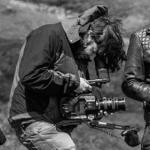
DJI X5R - First Impressions
Marco Bentz reacted to Oliver Daniel for a topic
I've had some time to play with the DJI X5R and for the first time, put it knee deep into a professional shoot with lots of flashy stage lighting (the video is a high end "fake live" shoot for an international events band. So far, using this device is a very slow burner and I can't really make a judgement yet, but here's some things I've found. There are many negatives at first, however I'm trying to solve them and see what difference it makes in the long run. What I do know is that this combination has a lot of potential, however this camera needs quiet a few firmware updates to get there. ProRes on board would be great! I feel DJI didn't test this camera enough before release. Had to deal with lots of annoying issues. Positives Footage in 4k and HD raw an be spectacular - very clean and detailed (but only if you shoot and light skilfully!). Very intuitive to use, combining the Osmo and Inspire 1. DJI Go app responds and works very nicely. Stabilisation and handling is very different to a normal 3-axis gimbal like the Ronin, however getting to know it's behaviour can yield some awesome moves. Walking bounce can be eliminated if you know how to "do the walk". Some shooters online are just not trying at all, letting the vertical movement bounce everywhere. Walk as flat a possible, all is good. Unit is small and light - no balancing required. No big bulky cases. Nice and portable. Low light is better than expected. GH4 level really. Battery extender is very useful, if you need long periods. (lasts about 2 hours 45 mins on constant with Inspire 1 TB48). Proxy files look decent in good light. Handy to have when raw isn't an option. 1080p is very sharp. 4k is ridiculous. The gimbal lock on the Osmo is sweet. You can pull off some crazy dolly moves and pans. Negatives Autofocus on the app isn't great. Takes two tries and it MUST be on something of high contrast to work well. Aperture resets overtime you switch off the device. Bit annoying. As phone is a monitor, you need a USB power bank. I strapped one on the back of the mobile phone holder. Phone (iPhone) lasts 45 mins otherwise. iPhone monitor image breaks up sometimes and lags quite a bit. Annoying if you are trying to do a smooth movement or judge focus/exposure. Changing settings such as aperture can be fiddly. It just won't let you choose what you want sometimes. Sometimes the unit goes into sleep mode a few seconds after you switch it on. SSD fan noise is like a shit hoover. The internal audio with the cheap mic add-on is absolutely garbage. It's hard to hold the X5R on the Osmo with one hand, while using the thumb controller. Two hands is better. The SSD card reader is shockingly temperamental with Mac. Sometimes it doesn't mount at all. Have to use USB keyboard input on Mac. Doesn't work on the normal USB inputs. DJI Cinelight is rubbish. Transcoding is very slow and the tweaking options are very basic. Memory fills very quickly. HD is about 2 hours per SSD, where 4k is about 25 mins per SSD. For long shoots , another SSD is almost essential. Just very very pricey. Focusing can be difficult on apertures between f1.7 and f5.6 using the app. Seems like the expensive follow focus would be ideal (not on your wallet). Normal OSMO batteries last about 7 minutes. D-LOG on proxy files is a HUGE HUGE no-no!! It looks and grades horribly on the teeny 60mbps codec. That's enough for now! More soon...... with images!!1 point -
Canon 5D III x Lexar 256GB CF: max recording time: 38:34 .. make sense?!!
Michael Coffee reacted to Luke Mason for a topic
It's a known issue that 5D3 1DX 1DC and other Canon DSLRs don't work well with 256GB cards, better have multiple 128GB cards. 1DX II however improved support for larger capacity CF cards.1 point -
Sony A6300 review (rolling) - Striking image but nagging issues
Liam reacted to Luke Mason for a topic
Sony just released a V1.10 firmware update for A6300 specifically to deal with overheating: Windows: http://service.sony.com.cn/90809.htm MacOS: http://service.sony.com.cn/90811.htm V1.10 release notes: 1. Optimized temperature control algorithm. 2. Improved camera reliability and operational stability.1 point -
Don't Nikon and Olympus do this in camera? Pretty sure Nikon does.1 point
-
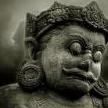
Questions on Single Colors
Michael Coffee reacted to sanveer for a topic
Thank you so much for the reply. I guess, now I know what cross process would imply on the menu. Also, thanks for the PremiumBeat link, it is extremely informative. Maybe I will have to do it in post. Hopefully I won't have to use a RAW or ProRes camera, only for this, and the H.264 is sifficient. I am disappointed though, that DSLRs/ DSLMs don't have similar features to smartphones. Kindda sad.1 point -

Questions on Single Colors
sanveer reacted to Michael Coffee for a topic
Done in post - colour keying such as with the qualifier in Resolve.. http://www.premiumbeat.com/blog/isolated-color-look-resolve/ There are a few methods to do this, but afaik no dslr can do it in camera - smartphones usually seem to be ahead with the built in filters and effects, but it seems dslr's are catching up.. Cross process is developing a film with the process from a different film https://en.wikipedia.org/wiki/Cross_processing I think most of these filters only work for stills on the Panasonics1 point -

G7 Internal Recording + HDMI out?
Liam reacted to Michael Coffee for a topic
Also seen this referred to as audio bracketing1 point -
I just realized that if an electronic adapter could be made this will open the NX mount to all lenses made for Canon and Niknon with AF as well (maybe even OIS?). For video a speed booster is more exciting though.1 point
-
Well, as a long-time NX1 shooter, I'll say it's pretty fantastic. You can get a really beautiful, cinematic image with it. It can really, really sing with old lenses - like 60's/70's glass, Canon FL or the various screw-mount stuff, aperture-ring Nikkors (I'd get adapters while they're still around). The native glass seems awfully "clinical" to me. The H265 is a real space-saver - even if you convert to ProRes to edit, you can shoot all day without a ton of cards or SSDs. If you use an external audio recorder and good mics, you can run the camera-out into the NX1 and if you're careful, you can get fine audio without having to synch in post (though I would 100% advise you still record externally too). 4K is absolutely the shit for reframing or post-stabilizing... but the jello at 4K is abysmal. At 1080, the jello is in the best-in-class range (but it ain't global-shutter class, it's still there). So - handheld or real action stuff, shoot 1080. I only shoot 4K if I know I'll reframe. AF can be useful, but you might test low-level (1/4) diffusion, pro mist or black pro mist, with NX glass. "Iron Man" was shot with 1/4 and 1/2 pro mist (black I think?), and we don't think of it as a "diffused" movie at all. Where it fails is where the BMC stuff really kicks in - DR. Doing outdoor work or indoors where you want to hold a sky through windows, you'll need lighting - indoors a 575 HMI par is the bare, bare minimum and a 1200 would do much better. Outdoors, HMI or a very well-executed reflector and scrim setup. That's if it's bright and sunny and you want to hold sky color and detail. And overall, shooting flat with lighting, not camera profiles really helps. Some big, soft fill sources to bring up shadows so you can tamp them back down in post. I've played with the Andrew Reid conversion and luts, but you run the risk of big, chunky, moving noise if you go too far. Get close in-camera. But those issues are the same with most any 8-bit, non-raw camera. You really have to plan for highlights and deep shadows, and I'm a believer in printing out plenty of color reference (send images to a photo print place - have good prints) and attaching to your storyboards, and setting yourself up on set for a successful grade. It's no Alexa.1 point
-

Sony A6300 review (rolling) - Striking image but nagging issues
iamoui reacted to bamigoreng for a topic
The new video from Kendy (A6300, Sigma 30mm f/1.4, Beholder DS1, M31 LUT by VC + curves in AE)1 point -
1 point
-
Samsung NX Speed Booster
lucabutera reacted to cisco150 for a topic
I would like one so let me know when they available thanks for your hard work1 point -
btw, I'd love to play a game of "guess the camera"... what do people think "This Giant Papier-Mâché Boulder Is Actually Really Heavy" was shot with?1 point
-
he he, i though you might get tricky and just crop it 2x, amazing shots, i'd say Ultrastar, but it's really hard to tell without seeing flare1 point
-

Samsung NX Speed Booster
lucabutera reacted to SMGJohn for a topic
Amazing work as usual, looking forward to use some of my full frames on the body1 point -
Wow !!! I really like the trailer. Looks like a super crazy and entertaining low budget Indie. When is it out? Also, will it have a world-wide release?1 point
-
I went to IMDB right after seeing the movie because there seemed to be such a mish mash of cameras there. I saw some extremely clean low-light fly-overs and some very grainy normal light shots, as well as some fast pans that clearly showed rolling shutter. The site lists the following as being used: ARRIRAW (2.8K) (source format) (some scenes) Canon Cinema RAW (4K) (source format) (some shots) CineForm RAW (2K) (source format) (some shots) Digital Intermediate (2K) (master format) Redcode RAW (6K) (source format) (some shots) Super 16 (source format) (some scenes) Super 35 (3-perf) (source format)1 point
-
You basically record a 'safety track' as backup of the same recording, at about 10dB lower that the main one. So if there is some popping as a consequence of a surge in sound by a talent or anything else, you have a backup, at a lower dB. It can be done with almost all dual sound recorders (whether separate channels, or mono). Like with the Shure LensHopper VP83f. You can record the 2nd sound (the one on the MicroSD Card) at 10dB lower, to have as a Safety Track. It is there on most sound recorders, that have more than one channel, or record into more that one place (camera and recorder etc).1 point
-
I was DoP for part of this: The director was himself one of the key leads! Good idea really, as it was a long slog. 5yrs in the making! My Tascam DR60D has this feature. "Safety track"1 point
-

Canon 1Dc $4,999
Dave Maze reacted to Andrew Reid for a topic
I don't think it will happen because the market has spoken and said 'we prefer the C300 form factor' Also the 1D X II doesn't appear to move on the technology from the 1D C in any way to warrant Canon basing the Mk II on it aside from adding Dual Pixel AF. I don't think they could bring out a Cinema EOS camera in 2016/17 with an MJPEG codec I await to be proven wrong, however a new 1D C back at the old price of $12k has very little appeal to me especially if they just add H.264 to the 1D X II body and don't change the ergonomics. The 5D Mk IV is what I have my eye on... fingers crossed for an interesting Photokina!1 point -
1 point
-

What "style" of edit is this ?
Gregormannschaft reacted to OliKMIA for a topic
The essence of that kind of video is: 1. Capture a lot of footage. The author says that he captured 4TB of data to make a 3:30 minutes video in 1080.. 2. Match the transition using motion blur, perfect image and frame alignment. This is very important because just a few degrees difference or 1 frame before or after can ruin/win a transition. Like he says : "To create a continuous movement, every cut must appear to seamlessly transition into the other. And you can only see if shots really work together while you are cutting them on the timeline. You can have a shot that is very cool but the colour, the content or the movement doesn’t match with the preceding or the following shots. So you have to find another one. It’s like a puzzle. Finding those shots that match perfectly together and that also fit with the story and the overall flow of the edit can be a big problem when you have so much footage." So it's a game of patience and hard work, can be very very dull sometime because of the amount of raw footage. For the hyperlpase, I can try to help answer your question if you want. Here is what I do:1 point -

G7 Internal Recording + HDMI out?
Michael Coffee reacted to Liam for a topic
This seems like decent time to ask this.. I forget what the technique is called where you have two mono audio channels recording, set at different levels, to have a back up if one of them clips, like increase the dynamic range of the audio. Without the name it was impossible to research how to do it. Feel like that would be an awesome tool to get something usable on set.1 point

